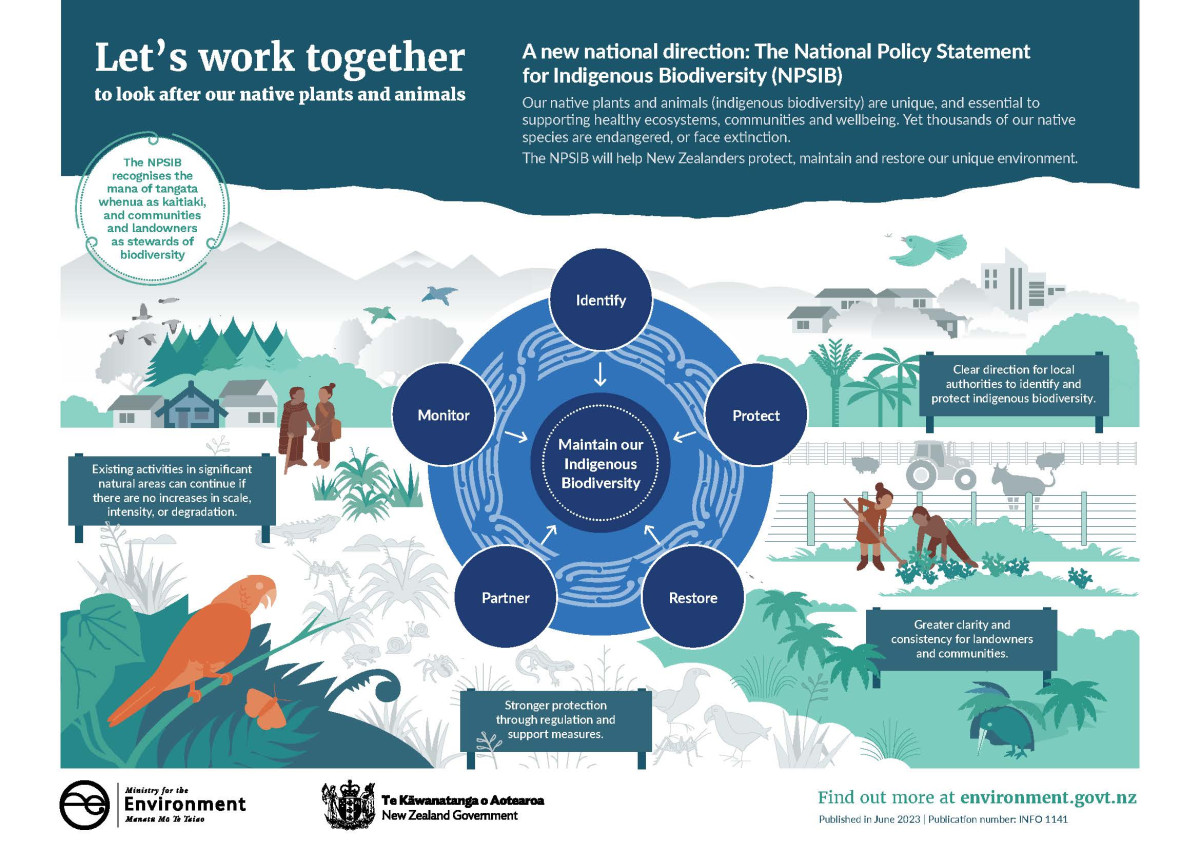Certified copies of documents incorporated by reference into the NPSIB. The documents, or the specified parts of these documents, have the same legal effect as the NPSIB.
The chief executive of the Ministry for the Environment has certified these copies as correct.
National List of Exotic Pasture Species
Referenced in clause 3.17(3) and presents the full list of exotic pasture species in Aotearoa New Zealand that may be considered under the definition of 'exotic pasture species'.
National list of exotic pasture species
Land Environments of New Zealand (LENZ) Classification System
Referenced in Appendix 6 and is an environmental classification of Aotearoa’s terrestrial environments that is designed to provide a framework for addressing a range of conservation and resource management issues.
LENZ provides tools for assessing depletion of indigenous vegetation or ecosystems. Incorporating electronic tools by reference is allowed under section 1(4) of Schedule 1AA of the RMA.
Land environments of New Zealand classification system
New Zealand Threat Classification System lists
Referenced in Appendix 1 and provides a tool for assigning a threat status to candidate taxa. The classification system has been developed to apply equally to terrestrial, freshwater and marine biota. The list of ‘Threatened and At Risk species’ is used in the key assessment principles in the SNA identification “Rarity and distinctiveness criterion” under Appendix 1. Incorporation of these tools are also covered by section 1(4) of Schedule 1AA of the RMA.
New Zealand threat classification system lists [NZTCS website]
NZTCS exported data [Excel, 3.4 MB]
New Zealand Threat Classification System manual
Provides the methodology for assigning a threat status to candidate taxa, which underpins the New Zealand Threat Classification System lists. The manual is used under clause 1.6 for the definition of “Threatened or At Risk, and Threatened or At Risk (declining)” for indigenous species of flora or fauna.
New Zealand threat classification system manual
Ecological regions and districts of New Zealand
Divides New Zealand into a series of characteristic landscapes with particular biological communities according to topographical, geological, climatic, soil and other features. The document is referenced under clause 1.6 for the definition of “ecological district” as part of the SNA identification criteria and principles for biodiversity offsetting and compensation under Appendix 1.
Ecological regions and districts of New Zealand [PDF, 506 KB]

